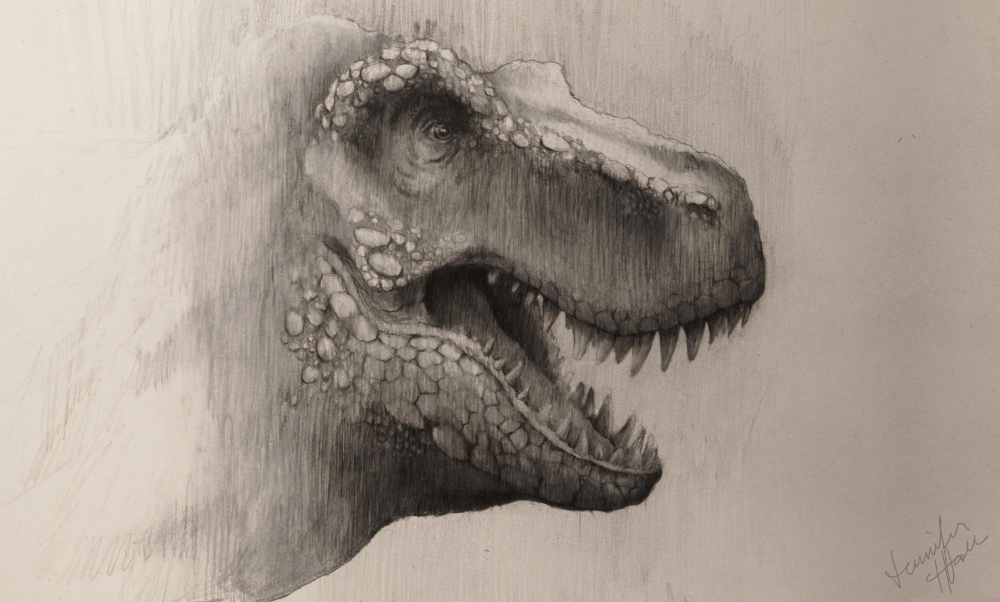Welcome to my website. Much of my work is inspired simply by that which is exquisite in the natural world. However, having had an education and career that has had heavy emphases in both fine art/criticism and earth science, there has been an inevitable blending of these two themes that has manifested into a theory on scientific art that I can only describe as an artist's statement. What follows are some ruminations on the state of science, education, and art, and how the images you see on my site are informed by these ideas.
Art in the Age of Evolution
Sketch of a Tyrannosaurus rex. Graphite on paper. Copyright Jennifer Hall
In 1936, cultural critic Walter Benjamin wrote an essay entitled "Art in the Age of Mechanical Reproduction." In this famous publication, Benjamin acknowledged the loss of the "aura" in hand-crafted art to a highly accurate "capitalist mode of production." Benjamin believed that each mechanically reproduced duplicate of an original piece stripped the artwork of the sacred authority with which it could arbitrarily denote power. Thus, the artwork's ability to promote tyranny, control, and other trappings of fascist institutions would be undermined. He believed that mechanical reproduction was a more democratic mode of image sharing that had the potential not only to become a weapon of political revolution, but to inevitably and irreversibly affect society's aesthetic sensibilities.
There is no doubt that society's changing aesthetic sensibilities have gone far beyond what Benjamin could have ever forecast. So too, perhaps, has the technology of mechanical reproduction. For the first time in human history our visual purview is not merely improved, but image technology can actually take us beyond the human optical scope. Humanity now has special access to spectra of light previously reserved only for those species whose evolution granted them a visual VIP pass in the form of specialized photoreceptors. With this new access we can see the radiative remnants of an event that occurred over 13 billion years ago, or we can observe electrical neural impulses that propogate through the brain like lightning across a stormy sky. When it comes to changing sensibilities, images like those from the Hubble Space Telescope begin to blur our categorization of visual information as we begin to wonder, "Where does the science end and the art begin?"
Benjamin's essay has informed the decisions of generations of art makers. For me, it illuminates the equalizing potential of visual information, the nondiscriminatory dissemination of which could create a scientifically informed society. It is the unique technological circumstance of our age that allows us, if we choose, to begin to envision classless accessibility to education; education that is not based in the arbitrary aura of subjective religious inequality, but rooted in the soil of science and reason. It is with these concepts of the evolution of imagery in mind that I consider my position as an image maker working in a time when our culture and politics have become dangerously influenced by a crusade against science and education. I believe that it is the responsibility of scientific art to welcome people into an age of inquiry.
